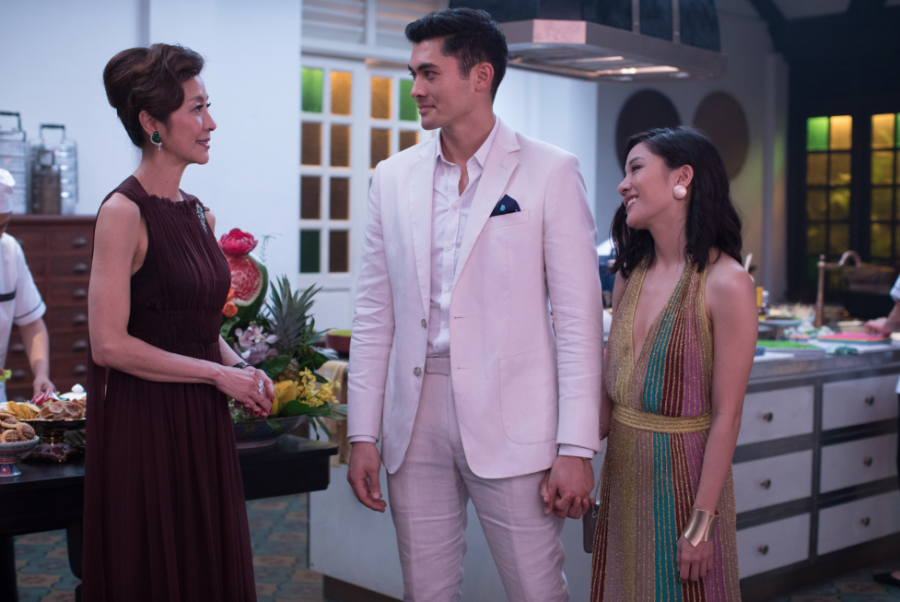‘Crazy Rich Asians’ breaks barriers in stereotypes
August 22, 2018
It’s been 25 years since a major Hollywood studio centered an Asian-led cast with “Joy Luck Club.” Unfortunately, the movie wasn’t the breakthrough hit that gave Asian-Americans a decent chance at having leading roles. “Crazy Rich Asians” might be the eureka for Asian-American actors.
The movie starts off with lovers Rachel Chu (“Fresh off the Boat”’s Constance Wu), a Chinese-American born and raised in the U.S., and Ni.ck Young (Henry Golding), a Singaporean-Chinese man born and raised in Singapore. Young asks Chu to accompany him to Singapore for his best friend’s wedding, where he is to be the best man, and to ultimately meet his family. At the airport, Rachel is shocked when she finds out that Nick has upgraded their tickets to first class. Nick then reveals that his parents are wealthy real estate developers.
When they land in Singapore, Rachel figures out that not only is Nick rich, but he is also Singapore’s most sought-out bachelor. Being with Nick officially puts a target on her back, and she has to deal with crazy exes and a disapproving mother (“Crouching Tiger Hidden Dragon”’s Michelle Yeoh).
“Crazy Rich Asians” breaks barriers and expands beyond the Asian stereotypes that Hollywood often portrays. It depicts Asians as actual human beings, more than just a genius geek like Dr. Hu in the “Jurassic World” films or a martial arts instructor like in “Karate Kid”. The movie is a liberation through portrayals in films for Asians; it focuses more about the universal importance of family and love that everyone in the world can relate to, but adds in Asian traditions like making dumplings as a bonding moment for the family.
I was delighted by the fact that the movie was not whitewashed. It’s safe to assume that Asian characters in films don’t always mean that Asian actors will represent them. For example, Scarlett Johansson played an Asian female lead in “Ghost in the Shell” and British actress Tilda Swinton played the Ancient One in “Doctor Strange”–a character that was Asian in the comics. And let’s not forget Emma Stone in “Aloha” playing a Chinese-American.
I’m not one to get teary-eyed in a movie. No tears were shed when I saw “Bridge to Terabithia” if that says something. So why did I, clearly heartless enough to be dry-eyed when Leslie died, cry at a typical rom-com? Because it wasn’t a typical rom-com. As an Asian-American, I was not used to Asians being the center of the movie. I cried because I have never related to a movie as much as I did to “Crazy Rich Asians.”
With the success that “Crazy Rich Asians” achieved, it’s clear that we need more movies with Asian-Americans as leading roles. Let’s not wait another quarter century for that to happen again.






